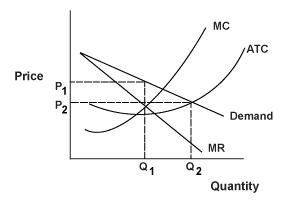KUALA LUMPUR: Malaysia’s exports rose 10%, or RM6.6bil to RM73.1bil in June 2017 from a year ago, boosted by electrical and electronic (E&E) products, but the increase was below economists’ expectations of a growth of 18.3%.
The Statistics Department in a statement on Friday said re-exports in June 2017 was valued at RM9.7bil and accounted for 13.2% of total exports. Domestic exports was higher by RM7.6bil to register at RM63.4bil.
It said on a year-on-year basis, imports also increased, rising RM2.3bil to RM63.2bil. However, the growth was below the 19.8% rise by economists’ forecast.
Total trade in June 2017 which was valued at RM136.3bil grew RM8.9bil or 7.0% from a year ago. However, it fell RM17.1bil or 11.1% when compared to May.
In June 2017, a trade surplus of RM9.9bil was recorded, where a similar increase of RM4.4bil or 79.0% for both year-on-year and month-on-month was registered.
Compared to May 2017, total trade, exports and imports fell 11.1%, 8% and 14.5%, respectively.
The Statistics Department said June 2017’s exports were mainly driven by an increase in E&E products, which rose RM3.7bil to RM28bil.
Liquefied natural gas (LNG), which contributed 5.4% to total exports, grew RM2bil or 97.3% to RM4bil due to the increase in both average unit value and export volume.
Palm oil and palm oil-based products, rose RM845.7mil to RM6.2bil. Exports of palm oil, the major commodity in this group of products, rose RM524.1mil or 16.5% due to the increase in both export volume and average unit value.
However, refined petroleum products, which accounted for 5% of total exports, shrank RM679.4mil or 15.7% to RM3.7bil due to the decrease in export volume (-31%) as average unit value increased 22.2%.
Timber and timber-based products fell RM67.1mil to RM1.7bil while crude petroleum decreased RM19.9mil to RM1.9bil due to the decline in export volume (-9.2%) as average unit value increased 9%.
The Statistic Department said on a year-on-year basis, imports increased 3.7% from RM60.9bil contributed by intermediate goods and capital goods.
It said intermediate goods which constituted 60.5% of total imports increased RM3.6bil to RM38.2bil. The growth was mainly attributed to parts and accessories of capital goods (except transport equipment), industrial supplies, processed, industrial supplies, primary and food and beverages, processed, mainly for industries.
In the first half of 2017, Malaysia’s total trade rose by 22% to RM859.17bil from RM704bil recorded in the first half of 2016.
The Statistics Department in a statement on Friday said re-exports in June 2017 was valued at RM9.7bil and accounted for 13.2% of total exports. Domestic exports was higher by RM7.6bil to register at RM63.4bil.
It said on a year-on-year basis, imports also increased, rising RM2.3bil to RM63.2bil. However, the growth was below the 19.8% rise by economists’ forecast.
Total trade in June 2017 which was valued at RM136.3bil grew RM8.9bil or 7.0% from a year ago. However, it fell RM17.1bil or 11.1% when compared to May.
Compared to May 2017, total trade, exports and imports fell 11.1%, 8% and 14.5%, respectively.
The Statistics Department said June 2017’s exports were mainly driven by an increase in E&E products, which rose RM3.7bil to RM28bil.
Liquefied natural gas (LNG), which contributed 5.4% to total exports, grew RM2bil or 97.3% to RM4bil due to the increase in both average unit value and export volume.
Palm oil and palm oil-based products, rose RM845.7mil to RM6.2bil. Exports of palm oil, the major commodity in this group of products, rose RM524.1mil or 16.5% due to the increase in both export volume and average unit value.
However, refined petroleum products, which accounted for 5% of total exports, shrank RM679.4mil or 15.7% to RM3.7bil due to the decrease in export volume (-31%) as average unit value increased 22.2%.
Timber and timber-based products fell RM67.1mil to RM1.7bil while crude petroleum decreased RM19.9mil to RM1.9bil due to the decline in export volume (-9.2%) as average unit value increased 9%.
The Statistic Department said on a year-on-year basis, imports increased 3.7% from RM60.9bil contributed by intermediate goods and capital goods.
It said intermediate goods which constituted 60.5% of total imports increased RM3.6bil to RM38.2bil. The growth was mainly attributed to parts and accessories of capital goods (except transport equipment), industrial supplies, processed, industrial supplies, primary and food and beverages, processed, mainly for industries.
In the first half of 2017, Malaysia’s total trade rose by 22% to RM859.17bil from RM704bil recorded in the first half of 2016.






